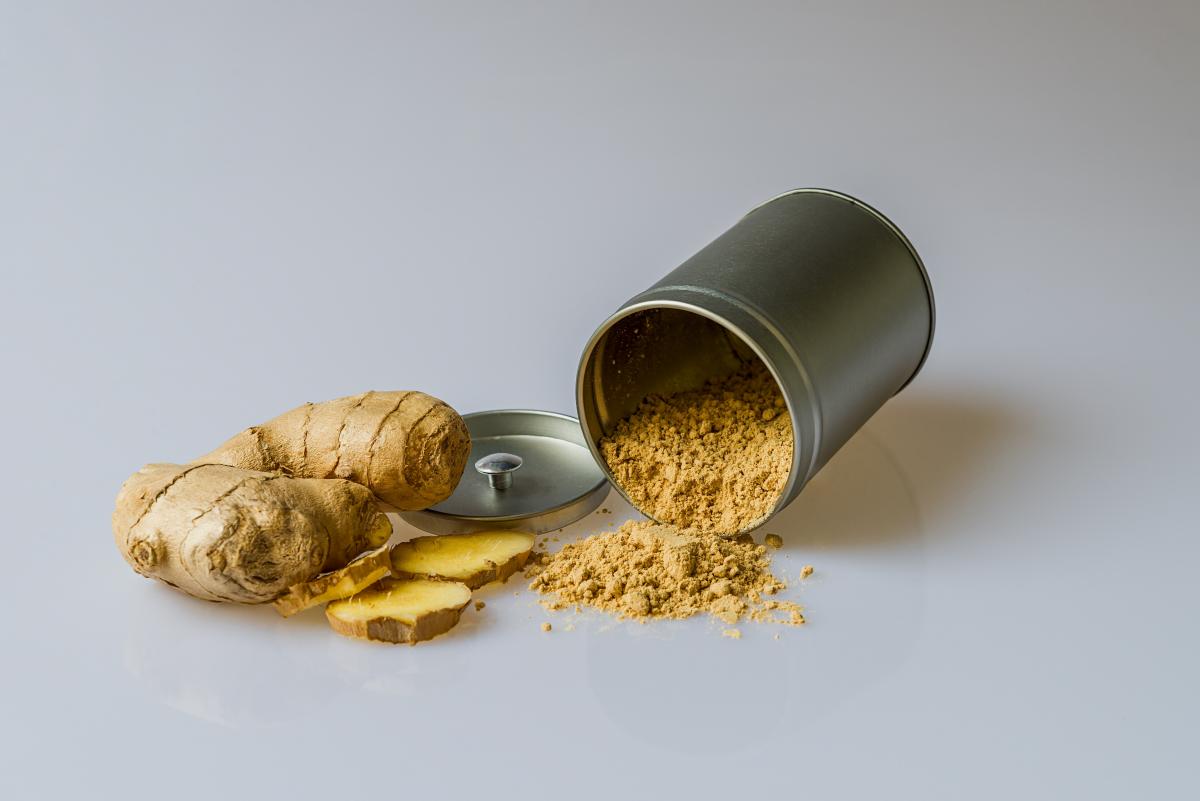ANTIOXIDANTS and other health-giving ingredients are highly in demand as food and beverage becomes the means to deliver added nutrients. And the fact that there is a shift in consumer preference toward convenience foods, antioxidants and clean-label products, the health ingredients segment is headed for growth. Companies with development and testing capabilities are investing more in R&D to create products to fill this space.
“Consumer preference for natural antioxidants, supported by an increasing number of products with proven health claims being offered by manufacturers, will help the natural antioxidants market rapidly expand,” noted Frost & Sullivan Visionary Science Practice Industry Analyst Arun Ramesh. “However, lower prices, higher heat-withstanding capability during food processing, larger number of scientific claims, and greater ease of availability are factors favoring synthetic antioxidants.”
Curcumin
The yellow pigment in the spice turmeric (Curcuma longa), curcumin has been known for its anti-inflammatory, anticancer, antiviral, and antibacterial activities. Hence it has become one of the more important ingredients for the industry. Frost & Sullivan’s Global Curcumin Market, Forecast to 2023 details consumer preferences to help companies in developing products with this ingredient.
According to the firm, increasing awareness of the value of curcumin in the formulation of, nutraceuticals, dietary supplements, herbals, cosmetics, functional foods and beverages, and other applications is creating more opportunities for extract and ingredient manufacturers. There is particular focus on curcumin R&D, as manufacturers are looking to differentiate themselves by offering novel curcumin ingredients using technologies that standardize its concentration to 95% and increase its bioavailability. Furthermore, investors are showing greater interest in the product due to large volumes of existing clinical data detailing the structure-function relationships of the active curcuminoids. There also have been many human clinical trials to establish its efficacy and safety in specific applications, such as prevention and supportive treatment of digestive disorders, arthritis, cancers and cardiovascular diseases.
“Curcumin R&D is mainly aimed at obtaining extracts with higher solubility, bio-absorption, bioavailability and other value-added properties that widen its application scope,” said Frost & Sullivan Visionary Science Principal Analyst Raghu Tantry. “Manufacturers have already succeeded in increasing its absorption in the gastrointestinal tracts post oral intake by humans. Its demonstrated utility in disease prevention and pain relief in inflammatory disorders such as rheumatism and osteoarthritis, as well as its anti-cancer properties, greatly enhance its profile and draw investments.”
Turmeric, the raw material source of curcumin, is a widely used ingredient in traditional food and medicinal recipes in the Indian sub-continent and Southeast Asia. However, consumers are still unaware of all the differences between turmeric and curcumin in terms of content and therapeutic or health benefits. Due to this, ingredient suppliers struggle to position their products optimally. They need to invest in educating customers across the value chain by employing trained technical support and customer service staff.
“The specialty natural ingredients industry is very active in developing commercially relevant curcumin extract products and conducting research that best serves formulators and consumers,” noted Tantry. “Suppliers with testing and development capabilities have a competitive edge in the market, as they are considered ideal solution providers to formulators and finished product manufacturers. Their ability to customize curcumin ingredients, aid in trial and pilot batch preparation, and smoothly escalate to commercial batch manufacture and global distribution will earn them significant partnership opportunities in diverse application areas.”
At Vitafoods Europe 2017, Japan-based Theravalues Corporation was among exhibitors of curcumin products. Its Theracurmin® Super is said to be an advanced form of curcumin with higher bioavailability which is 2.7 times more than the existing Theracurmin®. The product is approved in Europe, has been developed based on two different technologies: (1) a unique amorphous (non-crystal) producing technology and (2) a stabilizing technology.

Awareness of the value of curcumin in the formulation of nutraceuticals, dietary supplements, and functional foods and beveragesis creating more opportunities for extract and ingredient manufacturers, according to Frost & Sullivan Visionary Science Practice Industry Analyst Arun Ramesh
Turmeric extract and colitis
In India, Arjuna has confirmed that BCM-95®, a high-potency turmeric extract, is significantly more effective than standard curcumin in reducing the disease activity and inflammatory burden of colitis.
The study, published April 2017 in the journal Scientific Reports, by Shusuke Toden, Ph.D., et al of Baylor University, Dallas, Texas, compared the anti-inflammatory efficacy, or bioactivity of two products of differing bioavailability and composition (standard curcumin and BCM-95) in a well-recognized, imposed animal model of colitis. BCM-95 composed of pure curcuminoids and essential oils from turmeric with a specific content of turmerones. The study’s results demonstrated that the essential oil with curcuminoids was significantly more superior to standard curcumin in reducing the disease activity and inflammatory burden in the model. Moreover, the greater therapeutic efficiency of BCM-95 over standard curcumin in colitis was attributable to properties beyond enhanced bioavailability, including that of synergism between ingredients in this branded composition.
“For the first time, the enhanced bioactivity of BCM-95 as a result of synergism has been confirmed,” says Benny Antony, PhD, Joint Managing Director for Arjuna. “This new finding provides our customers an added value for promoting their BCM-95-based formulations in an increasingly crowded curcumin market.”
BCM-95 is a proprietary formulation of Arjuna natural extracts in joint venture with Dolcas Biotech LLC. without any synthetic additives. In BCM-95, this unique synergy forms a 95%-pure, bioactivity enhanced curcumin to create a highly effective turmeric extract with superior bioavailability. It has been extensively researched in multiple clinical studies by universities throughout the US, Japan, Australia, and India, and has been awarded 13 international patents.
“BCM-95 is backed by dozens of clinical research studies that show numerous health benefits,” notes P.J. Kunjachan, Chairman & Managing Director for Arjuna. The therapeutic benefits of turmeric can be attained at its best by combining curcumin with turmerone, an active compound derived from essential oil of turmeric.

Researchers from Penn State University say the porcini mushroom contains high amounts of ergothioneine and glutathione, which are antioxidants that could delay aging (Dreamstime)
Can antioxidants in mushrooms slow aging?
From the Penn State University, researchers have found that mushrooms may contain unusually high amounts of two antioxidants that could help fight aging and bolster health. Their study shows that mushrooms have high amounts of the antioxidants, ergothioneine and glutathione, said Robert Beelman, professor emeritus of food science and director of the Penn State Center for Plant and Mushroom Products for Health. He said that the researchers also found that the amounts the two compounds varied greatly between mushroom species.
“What we found is that, without a doubt, mushrooms are highest dietary source of these two antioxidants taken together, and that some types are really packed with both of them.”
Beelman said that when the body uses food to produce energy, it also causes oxidative stress because some free radicals are produced. Free radicals are oxygen atoms with unpaired electrons that cause damage to cells, proteins and even DNA as these highly reactive atoms travel through the body seeking to pair up with other electrons.
Replenishing antioxidants in the body, then, may help protect against this oxidative stress.
“There’s a theory – the free radical theory of aging – that’s been around for a long time that says when we oxidize our food to produce energy there’s a number of free radicals that are produced that are side products of that action and many of these are quite toxic,” said Beelman. “The body has mechanisms to control most of them, including ergothioneine and glutathione, but eventually enough accrue to cause damage, which has been associated with many of the diseases of aging, like cancer, coronary heart disease and Alzheimer’s.”
According to the researchers, who report their findings in Food Chemistry, the amounts of ergothioneine and glutathione in mushrooms vary by species with the porcini species, a wild variety, containing the highest amount of the two compounds among the 13 species tested.
“We found that the porcini has the highest, by far, of any we tested,” said Beelman. “This species is really popular in Italy where searching for it has become a national pastime.”
The more common mushroom types, like the white button, had less of the antioxidants, but had higher amounts than most other foods, Beelman said. The amount of ergothioneine and glutathione also appear to be correlated in mushrooms, the researchers said. Mushrooms that are high in glutathione are also high in ergothioneine, for example.
Cooking mushrooms does not seem to significantly affect the compounds, Beelman said.“Ergothioneine are very heat stable.”
Future research may look at any role that ergothioneine and glutathione have in decreasing the likelihood of neurodegenerative diseases, such as Parkinson's disease and Alzheimer's disease, he said.
“It’s preliminary, but you can see that countries that have more ergothioneine in their diets, countries like France and Italy, also have lower incidents of neurodegenerative diseases, while people in countries like the United States, which has low amounts of ergothioneine in the diet, have a higher probability of diseases like Parkinson’s Disease and Alzheimer’s,” said Beelman. “Now, whether that’s just a correlation or causative, we don't know. But, it’s something to look into, especially because the difference between the countries with low rates of neurodegenerative diseases is about 3 milligrams per day, which is about five button mushrooms each day.”
Air Maxs













